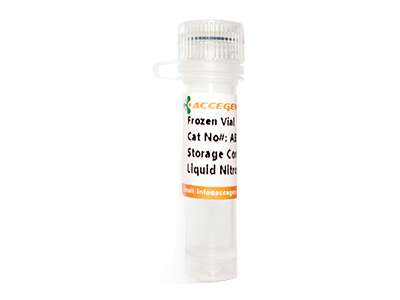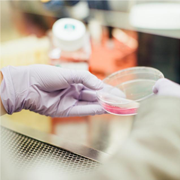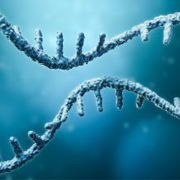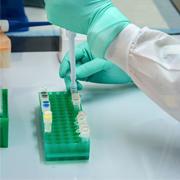Home > Products > Primary Cells > Human Primary Cells > Digestive System Primary Cells >
Human Colonic Microvascular Endothelial Cells |
||||
|---|---|---|---|---|
| Product Name |
Human Colonic Microvascular Endothelial Cells |
|||
| Price | Get Quote | |||
| Product Code | HCoMEC |
|||
| Cat.No |
ABC-TC3571 |
Species |
Human |
|
| Size/Quantity |
1 vial |
Biosafety Level |
1 |
|
| Shipping Info |
Dry Ice |
Storage |
Liquid Nitrogen |
|
| Description |
Endothelial cells lining the microvasculature are known to play a critical "gatekeeper" role in the inflammatory process through their ability to recruit circulating immune cells into tissues and foci of inflammation. Studies show that intestinal microvascular endothelial cells exhibit a strong immune response to LPS challenge and play a critical regulatory role in gut inflammation. Pharmacological inhibition of NOS in activated intestinal microvascular endothelial cells resulted in a significant increase in leukocytes binding. Gene expression profile study reveals that intestinal endothelial cells express biotinidase, which is involved in biotin recycling. The in vitro culture of these cells enabled scientists to perform systematic analyses of the cytokine profiles with regard to mRNA expression and protein secretion, and to compare such data with cytokine profiles concomitantly displayed by other endothelial cells.HCoMEC from AcceGen Research Laboratories are isolated from human colonic tissue. HCoMEC are cryopreserved at passage one and delivered frozen. Each vial contains >5×10^5 cells in 1 ml volume. HCoMEC are characterized by immunofluorescent method with antibodies to vWF/Factor VIII and CD31 (P-CAM) and by uptake of DiI-Ac-LDL. HCoMEC are negative for HIV-1, HBV, HCV, mycoplasma, bacteria, yeast and fungi. HCoMEC are guaranteed to further culture in the conditions provided by AcceGen Research Laboratories. |
|||
| Disease | Normal |
|||
| Source Organ | Colonic |
|||
| Quality Control | All cells test negative for mycoplasma, bacteria, yeast, and fungi. |
|||
| Recommended Medium And Supplement | ABM-TM3571 Human Colonic Microvascular Endothelial Cells Medium Kit |
|||
| Citation Guide |
When you publish your research, please cite our product as “AcceGen Biotech Cat.# XXX-0000”. In return, we’ll give you a $100 coupon. Simply click here and submit your paper’s PubMed ID (PMID). |
|||
| Application | For research use only |
|||
| Growth Conditions | 37 ℃, 5% CO2 |
|||
| Cell Type | Endothelial |
|||
| Growth Mode | Adherent |
|||
| Product Type |
Intestinal Cells |
|||
| Product Image |

|
|||
Frequently Asked Questions
-
What are Human Colonic Microvascular Endothelial Cells?
Human Colonic Microvascular Endothelial Cells are specialized cells that line the microvasculature (small blood vessels) within the colon. They play a critical role in regulating blood flow, nutrient exchange, and maintaining the integrity of the vascular barrier in the colon.
-
What functions do Human Colonic Microvascular Endothelial Cells perform in the colon?
Human Colonic Microvascular Endothelial Cells are involved in regulating blood flow and permeability, facilitating nutrient and gas exchange, and maintaining the vascular barrier to prevent the leakage of blood components into the surrounding tissue. They also play a role in immune response and inflammation within the colon.
-
What are Human Colonic Microvascular Endothelial Cells used for in research?
Human Colonic Microvascular Endothelial Cells are used in research to study colonic vascular physiology, inflammatory bowel diseases (such as Crohn’s disease and ulcerative colitis), colorectal cancer, and the effects of various drugs on the colonic vasculature. They are also utilized in investigations of angiogenesis and vascular permeability in the colon.
-
How are Human Colonic Microvascular Endothelial Cells isolated from colonic tissue?
Human Colonic Microvascular Endothelial Cells are isolated from colonic tissue through a combination of enzymatic digestion and mechanical dissociation. The tissue is typically minced and treated with enzymes to break down the extracellular matrix, followed by mechanical agitation to release the endothelial cells. The cells are then purified using specific markers or selection techniques to ensure a pure population of Human Colonic Microvascular Endothelial Cells.
- ONLINE INQUIRY
- PRODUCT REVIEWS
Fill out a request in the form below and we’ll get back to you within 24 hours with a quote.





